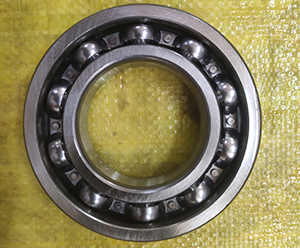
Bearing dimensions catalogue
NSAR, a professional 6000 bearing supplier in China, provides a broad variety of 6000 bearing with best customer service and quality assured. With more than 20 years 6000 bearing manufacture experience, our 6000 bearings has been exported to United States, Canada, Mexico, Brazil, Argentina. NSAR can satisfy your bulk 6000 deep groove ball bearings customization needs,We provide 6012 bearing and 6200 bearings series and 6300 bearing.you can products download.
A bearing dimensions catalog is a comprehensive document or publication that provides detailed information about various types of bearings, including their dimensions, specifications, and technical details. Such catalogs are essential resources for engineers, designers, and maintenance professionals who work with bearings. Here’s what you might find in a typical bearing dimensions catalog:
Product Range:
An overview of the entire range of bearings offered by a specific manufacturer or supplier.
Load Ratings:
Load-carrying capacity specifications for radial and axial loads. This information helps in selecting the right bearing for a specific application.
Bearing Types:
Detailed information on different types of bearings, including ball bearings, roller bearings, spherical bearings, etc.
Dimensional Data:
Comprehensive tables with the dimensions of each bearing type. This includes inner and outer diameters, width, and other critical measurements.
Cage Types:
Information on different cage designs used in bearings, such as steel, brass, or synthetic materials.
Seals and Shields:
Details about sealing options, including descriptions of various types of seals and shields for protection against contaminants.
Clearance and Preload:
Details on internal clearances and preloads, important factors in bearing performance and longevity.
Special Features:
Information about any special features or coatings on bearings, such as corrosion-resistant coatings or high-temperature capabilities.
Application Guidelines:
Recommendations and guidelines for selecting the appropriate bearing based on specific application requirements.
Mounting and Maintenance Instructions:
Instructions on proper bearing installation, mounting, and maintenance procedures.
Tolerance and Precision:
Tolerance classes and precision levels, specifying the manufacturing accuracy of the bearings.
Lubrication Information:
Recommendations for suitable lubricants and lubrication intervals to maintain optimal performance.
Temperature and Speed Ratings:
Guidelines on the maximum allowable operating temperatures and speeds for each bearing type.
CAD Models:
In some catalogs, computer-aided design (CAD) models or drawings may be included, allowing engineers to incorporate the bearings into their designs.
These catalogs are typically provided by bearing manufacturers or suppliers and can be available in both print and digital formats. Engineers and professionals often refer to these catalogs during the design and selection process to ensure they choose the right bearings for their specific applications.
Bearing dimensions catalogs:
Cross-Referencing Information:
Some catalogs include cross-referencing tables, allowing users to find equivalent bearings from different manufacturers. This is valuable when searching for replacements or alternatives.
Quality Certifications:
Details about quality control measures and certifications, assuring users of the bearings’ compliance with industry standards.
Environmental Considerations:
Information on how bearings perform in specific environmental conditions, including resistance to contaminants, moisture, and other external factors.
New Technologies and Innovations:
Updates on the latest technologies and innovations in bearing design and manufacturing, providing insights into cutting-edge developments.
Vibration and Noise Characteristics:
Specifications regarding vibration and noise levels, crucial considerations in applications where smooth and quiet operation is essential.
Material Specifications:
Details about the materials used in the manufacturing of the bearings, such as the types of steel, alloys, or ceramics employed for specific applications.
Dynamic and Static Load Ratings:
In-depth information on dynamic and static load ratings, providing insights into the bearing’s capacity to handle varying loads over time.
Case Studies and Application Examples:
Some catalogs feature case studies or application examples, showcasing real-world scenarios where specific bearings excelled in performance.
Technical Support and Contact Information:
Contact details for technical support or customer service, enabling users to seek assistance when needed.

